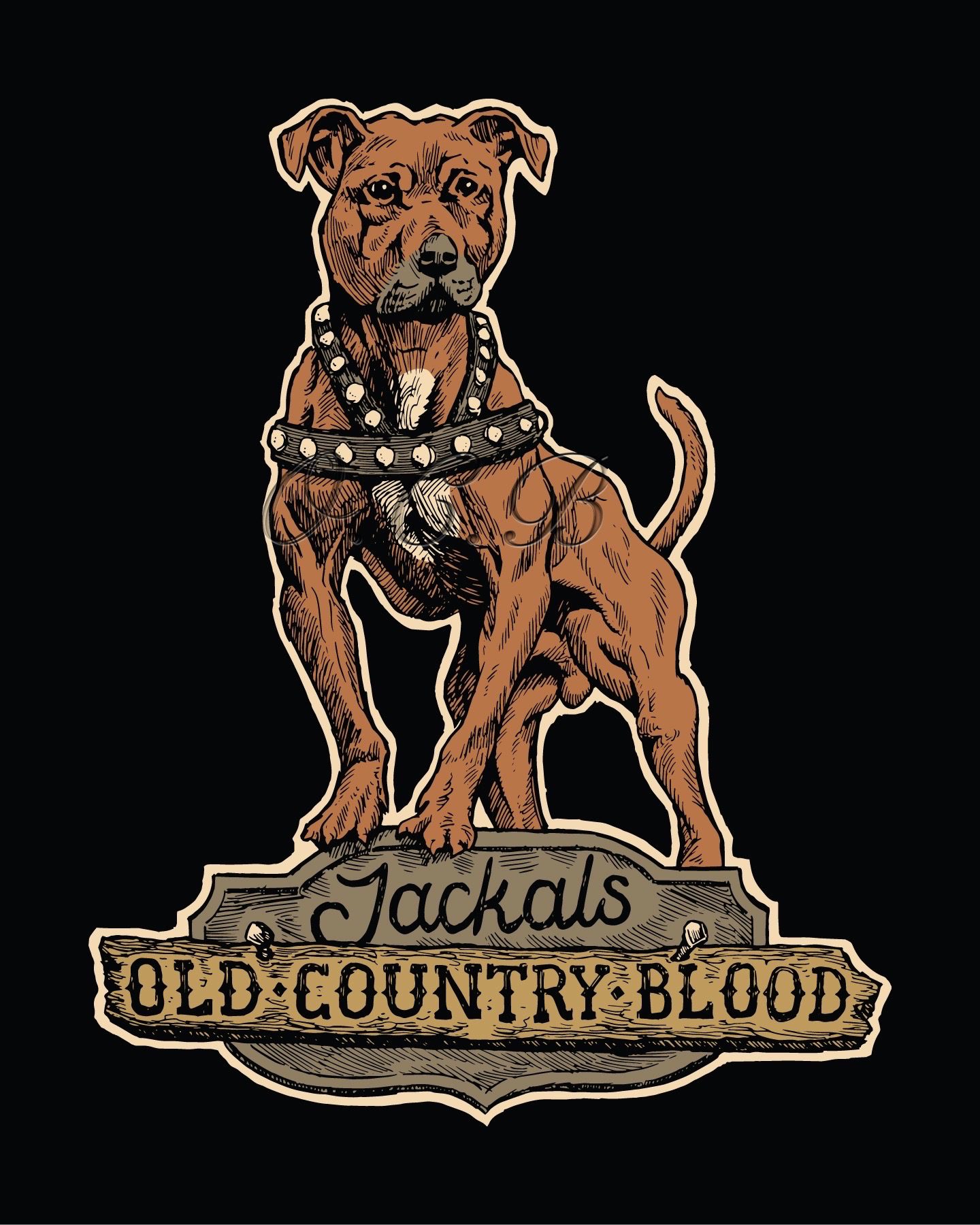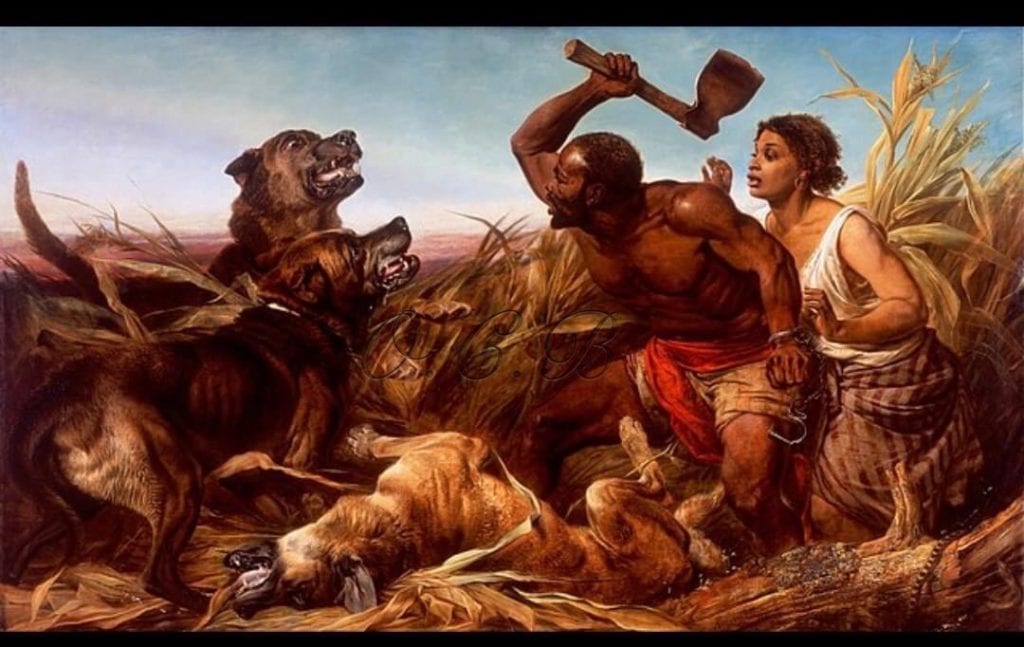The Dogo de Cuba, Cuban Bloodhound, Dogo Cubano and Cuban Mastiff were all names given to the same type of dog used through out the new world by the Spanish.
I have always been extremely sceptical with half of what I have read about the Cuban Bloodhound as a lot of it is repeated modern jargon from one writer to the next. As there is a number of theories on the breeds origin and what dogs and countries played a role in it. This ferocious man eating dog that the Spanish used with great success during their campaigns of terror in the Americas has been the subject of many articles in books and on the internet over the years.
The first thing I want to clarify is that the Cuban Bloodhound was not a bloodhound like the bloodhounds of today. I would go a step further and say that there was very little Bloodhound blood in the Cuban Bloodhound if any at all. The other point I want to clarify is that the dog known as the Siberian Bloodhound which was of a similar type and also mentioned in many history books, derived from early Boarhound dogs from Central Europe and Eastern Europe whilst the Cuban derived from dogs that were originally from the Iberian Peninsula.
I have done a lot of research over the years on the Cuban Bloodhound and I think a bit of common sense has to be applied to try to piece together the true origin of this man eating dog. We also have to look at other similar breeds created on other islands that the Spanish and Portuguese settled during their time of exploration and discovery. The Cuban Bloodhound was extremely feared by native Caribbean’s and Americans as the breed was renown for taking down, killing and even eating humans during battles and when on guard duties. The breed was regularly deployed as a war dog, prison guard and plantation dog where it was used to chase down run away slaves. So much so that the breed in some parts of the Southern States of America was called the “Slave dog” or the “Negro dog”. There are many old adverts of owners of these powerful dogs advertising their services to anyone that required the use of such an animal. Its also well documented how many adults and children were attacked and even killed in error by these dogs when they were working chasing down natives or slaves.
In several old Spanish writings that I have found about the breed, the writers mention that the breed was created from a concoction of several different breeds from the Iberian Peninsula. It’s stated that Spanish Mastiffs (Livestock Guardians), Spanish Bulldogs (Alano types) and hounds were all used to create this beast of beasts. This would make sense, especially when we look at similar breeds like the Fila de Sao Miguel, Fila da Terceira, Presa Canario and Ca de Bou who were all created on different islands ruled by the Portuguese and Spanish. It’s well documented that these breeds were also created from a combination of different breeds like large shepherds crossed with farm dogs and hunting dogs to create the early Fila and Presa types.
The Dogo de Cuba was created along similar lines as these breeds but on the island of Cuba from dogs taken to the island by the first wave of Spanish conquerors and explorers. Later on, I’m sure that early Fila and Presa types which were very similar in type were also taken to the new world and crossed with the dogs already there. There would have been a continuous breeding of slightly different types together that all did the same function, as settlers and explorers moved around the Americas and went back and forwards from Europe. This also explains why there was such a variety in size in the Dogo de Cuba, there are records of some very large dogs weighing around 150lbs and others were described as only weighing half of that. The smaller dogs were estimated to be around 24 inches to the shoulder whilst the larger dogs were believed to be up to 36 inches to the shoulder. The same thing happened in Europe where a variety of types were all born in the same litter. Each type had its use and was used for a different function. The bigger more larger powerful dogs were extremely intimidating and therefore were mainly used as guard dogs and to keep prisoners and slaves in check. Whilst the smaller lighter dogs were perfect for covering large distances in extremely hot and humid conditions. The smaller lighter types really came into their own when the Spanish required a dog that was able to chase down and catch run away natives and slaves.
This is yet another example of dog fanciers using different types with in the same “breed” for different functions. Horses for courses as they say, as this was a time long before dog shows, breed standards and uniformity within types or breeds. The sole focus of any breeding at the time was the dogs working ability and not it’s looks.
The dogs that later became the Cimarron Uruguayo, Fila Brasileiro, Gran Mastino de Borinquen, Bajan Biting Mastiff and the Fighting dog of Cordoba were all similar dogs created from similar crosses in different parts of the Americas who later became known by local names.
The Dogo de Cuba became so famous and feared in the Americas that in my opinion any dog used for the same purpose as the Cuban wether it was from Cuba or not it was immediately classified as a Cuban Bloodhound. The name alone installed fear into people due to its savage reputation. The Cuban Bloodhound was the boogeyman of old, he was the dog of nightmares for every native and slave in the America’s.


I am from Cuba, and was born and raised in cattle/hunting farmlands. I’ve been a dog fan since I remember and had own many great dogs that were amazing workers in every field(catch dogs, gun dogs, guard dogs and son on..) probably some of these dogs still have some genes from the Cuban hellhound and you can probably still found some of that blood in the fighting pits which are still very popular over there. But there have also been a heavy influence of APBT and standordshire and dogo argentinos lately.
I love good working dogs and it’s sad to see how these amazing breeds are being destroyed by the show industry.
To bring the Cuban Bloodhound back would it be better to use stock from Cuba or complete outside breeds??Personally I think it would be better to use outside breeds because then you could test and cull for health temperament and working ability…..AND eliminate all apbt blood……
Amigo Cubano, esos perros son de tal nobleza que hay que juntarlos para liberar a Cuba de las sabandijas comunistas que la esclavizan por tantas y tan tristes decadas. Viva los perros de la conquista y su nobleza por la Corona de España.
To bring the Cuban Bloodhound back would it be better to use stock from Cuba or complete outside breeds??Personally I think it would be better to use outside breeds because then you could test and cull for health temperament and working ability…..AND eliminate all apbt blood……
pointless to remove the apbt blood as that’s the drive.
John… you do realize that the gamebred Pit Bull is quietly blended into many working dogs as they add endurance, tenacity and they pass on gameness such that whatever the task is the dog is better at it.
No, we don’t wish to “eliminate all Pit Bulldog blood” as they bring fire to the table where fire is required.
John Ketchun, why would you choose to eliminate all Pit Bulldog blood?
ALL of these breeds are related I think they all come from the Alaunt and distributed via the Romans as the Alani tribe served as the Roman cavalry. They had three types: Veantre, Gentile and Boucherie (why these dogs wear French names when describing Spanish dogs is interesting but Spain was recognized as breeding the best Alaunts around the 1200s). All of these breeds stem from these dogs – unless mastiffs and other “broad-mouthed dogs trickled in from elsewhere that is not documented.
The gamebred Pit Bulldog is harder than any other breed and by carefully BLENDING those genes into any animal needed for bite work it makes them better.